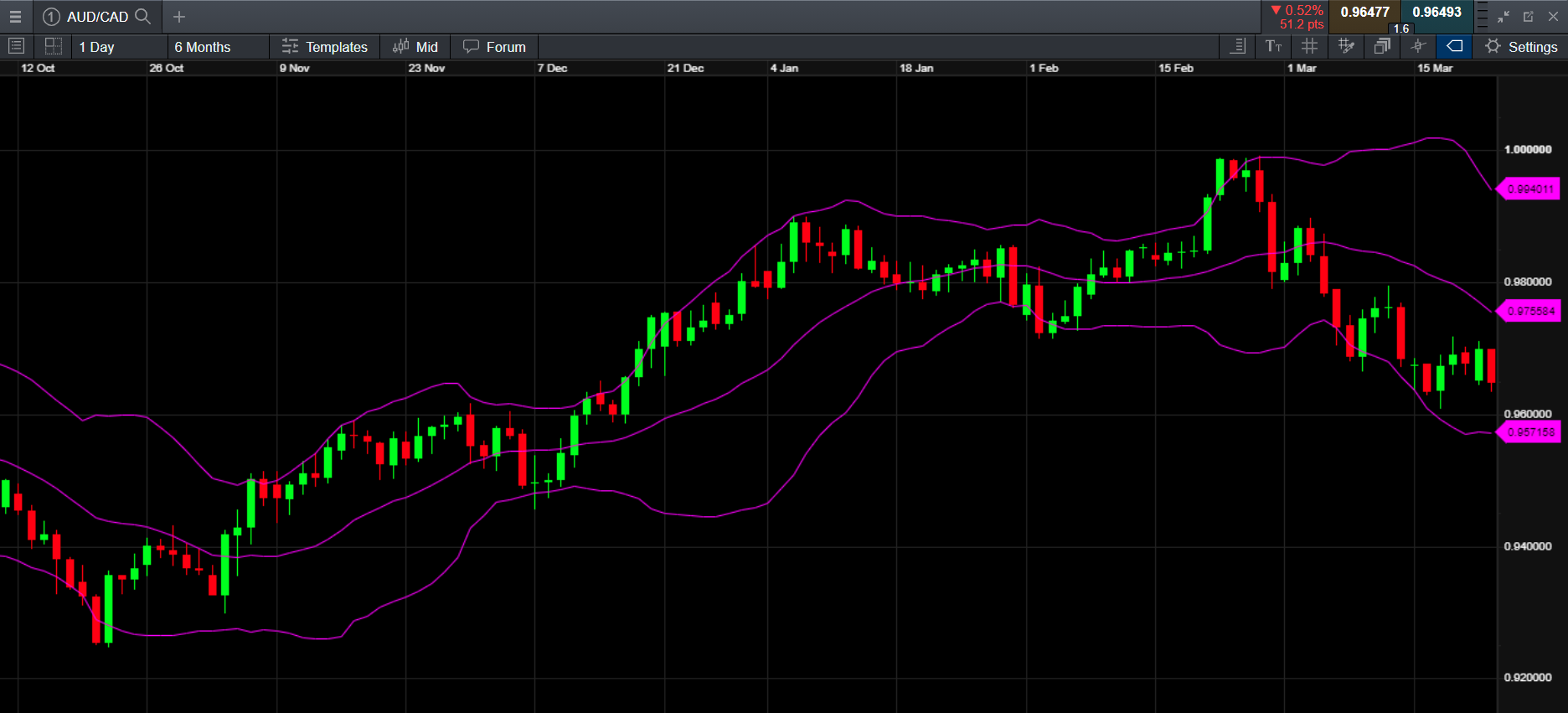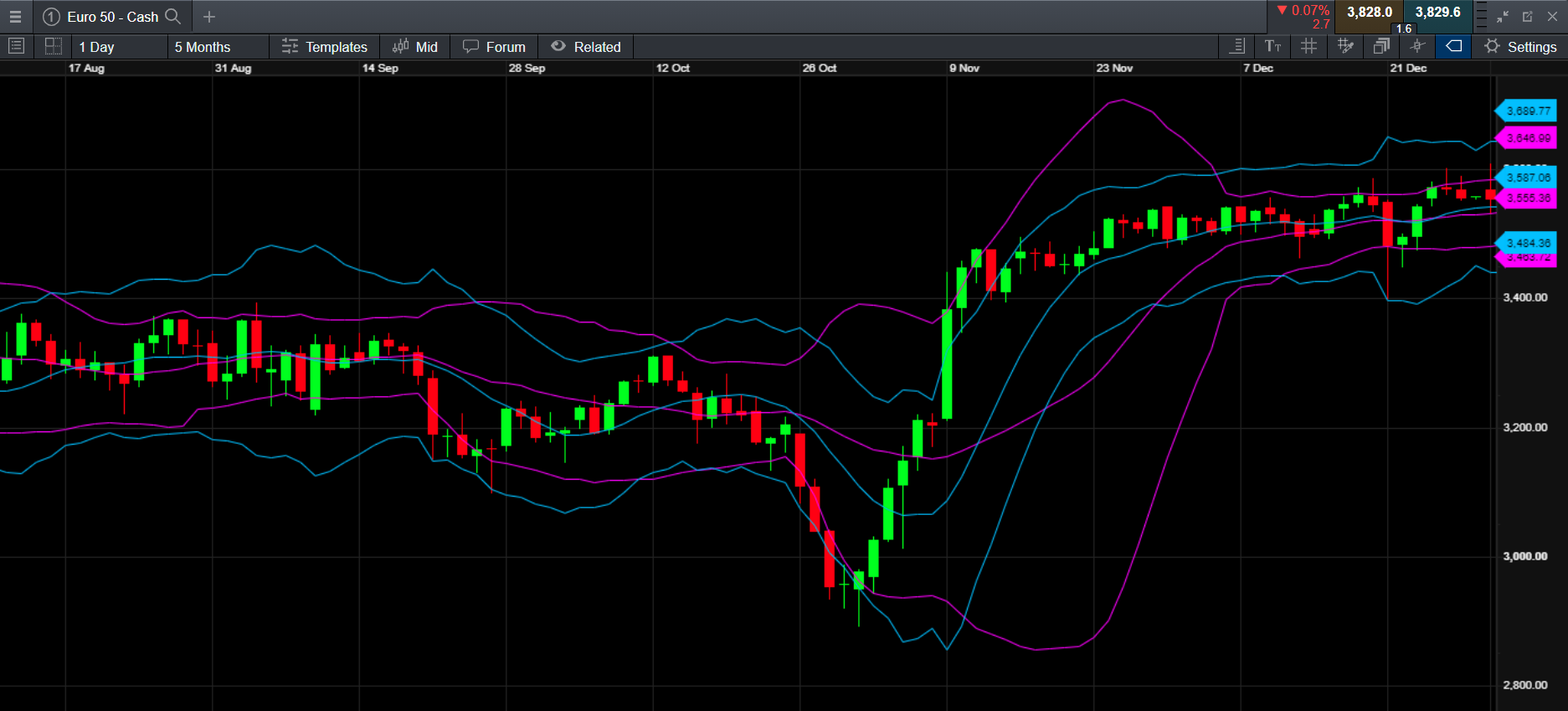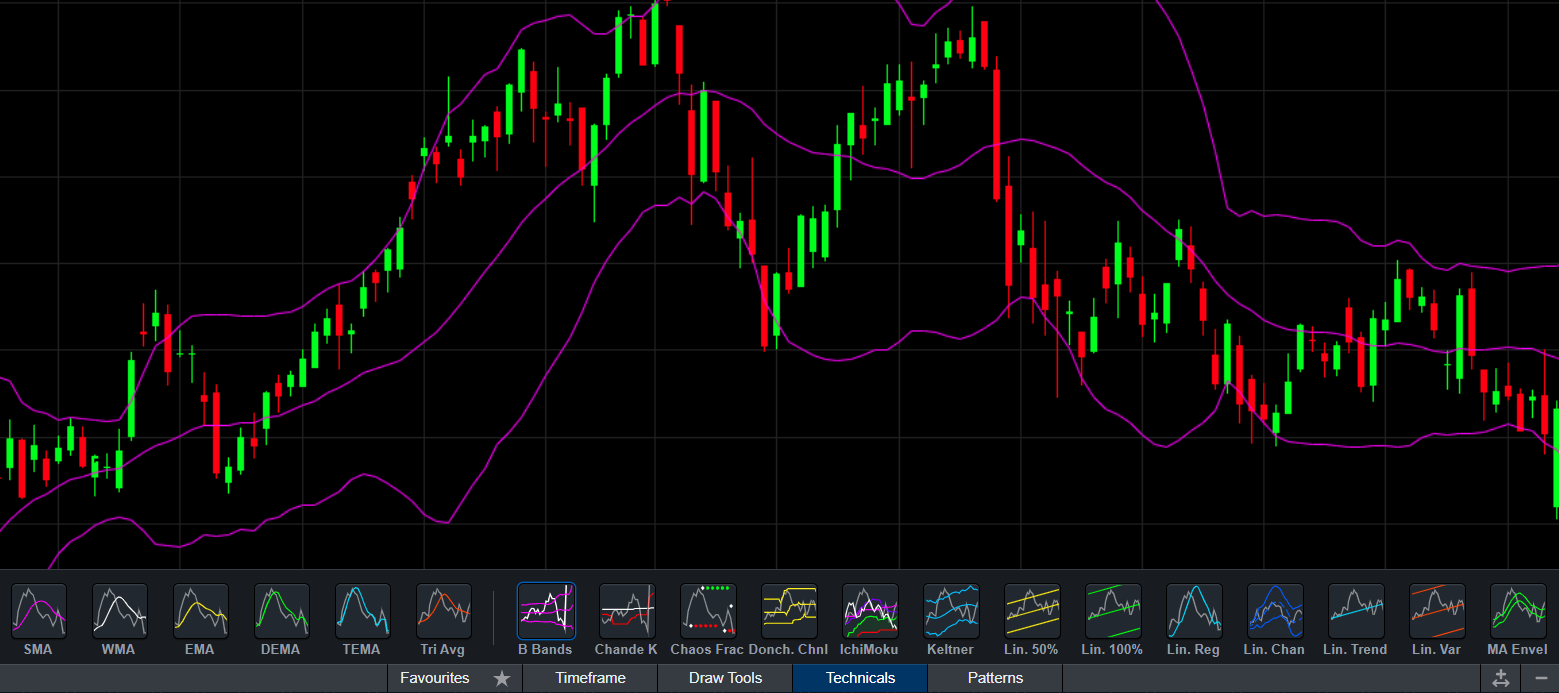Bollinger Bands are a technical anaylsis indicator that can be used to determine whether an instrument is overbought or oversold within the financial markets, and it can also be used to assess volatility. Bollinger Bands consist of three lines on a trading chart. The middle line of the indicator is the simple moving average (SMA) of the instrument's price, which is the average of the price over a certain length of time. This is generally set to a 20-day period. The upper band is the SMA plus two standard deviations. The lower band is the SMA minus two standard deviations.
Either side of the SMA is a Bollinger Band. Bollinger Bands look like an envelope around the price of the instrument. The widths of the bands are determined by the standard deviation. Standard deviation refers to the volatility of the instrument's price movements. This is generally set to 2.0.





